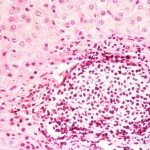Link to Pubmed [PMID] – 18279971
J. Neurosci. Methods 2008 May;170(1):67-76
Chloride (Cl) is the most abundant physiological anion. Abnormalities in Cl regulation are instrumental in the development of several important diseases including motor disorders and epilepsy. Because of difficulties in the spectroscopic measurement of Cl in live tissues there is little knowledge available regarding the mechanisms of regulation of intracellular Cl concentration. Several years ago, a CFP-YFP based ratiometric Cl indicator (Clomeleon) was introduced [Kuner, T., Augustine, G.J. A genetically encoded ratiometric indicator for chloride: capturing chloride transients in cultured hippocampal neurons. Neuron 2000; 27: 447-59]. This construct with relatively low sensitivity to Cl (K(app) approximately 160 mM) allows ratiometric monitoring of Cl using fluorescence emission ratio. Here, we propose a new CFP-YFP-based construct (Cl-sensor) with relatively high sensitivity to Cl (K(app) approximately 30 mM) due to triple YFP mutant. The construct also exhibits good pH sensitivity with pK(alpha) ranging from 7.1 to 8.0 pH units at different Cl concentrations. Using Cl-sensor we determined non-invasively the distribution of [Cl](i) in cultured CHO cells, in neurons of primary hippocampal cultures and in photoreceptors of rat retina. This genetically encoded indicator offers a means for monitoring Cl and pH under different physiological conditions and high-throughput screening of pharmacological agents.
